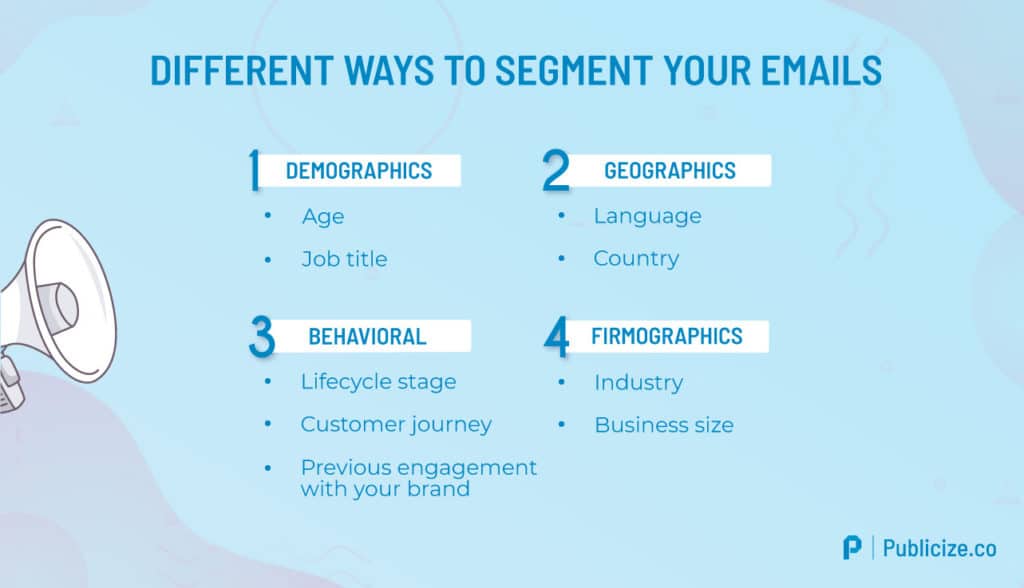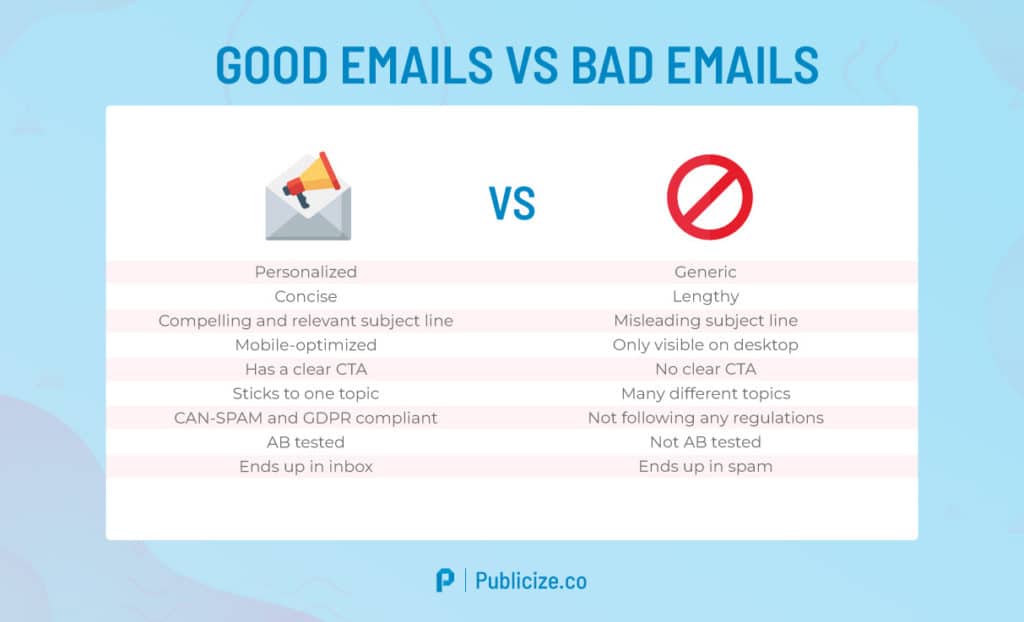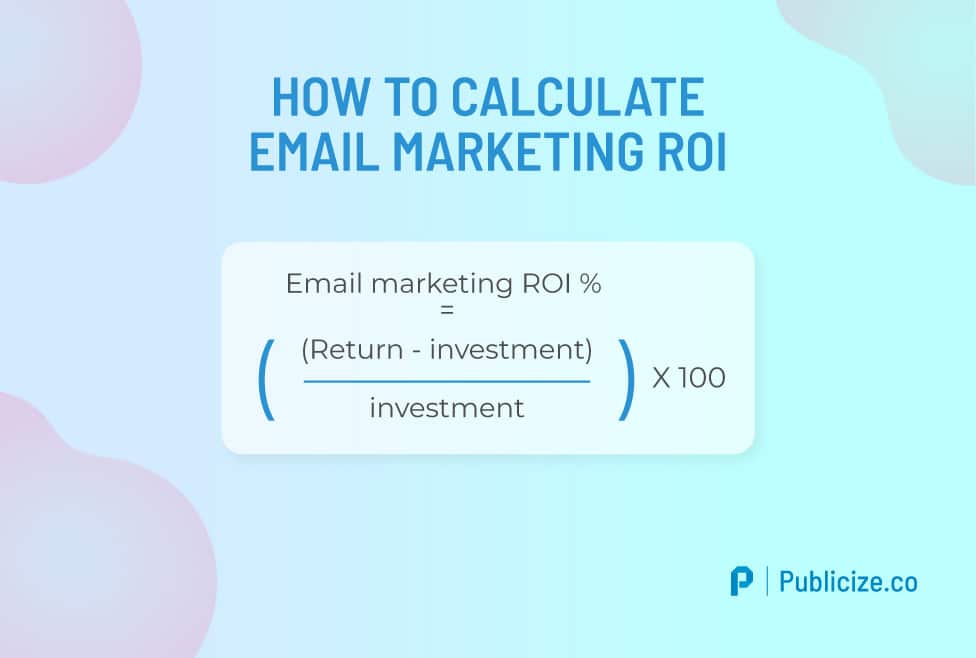Years of experience have taught us how to create an email marketing strategy that generates scolding hot leads for sales teams.
It’s time we share some of our success.
This complete guide to email marketing will teach you how to write effective email marketing content that converts, the common pitfalls of spam mail and the best email marketing practices for 2021.
Let’s begin with an email marketing definition.
What is email marketing?
Email marketing targets prospects and clients with email communications. These emails build connections with a target audience, boost brand awareness and nurture leads.
The importance of email marketing is clear. 73% of millennials prefer communications from businesses to come via email while 59% of subscribers say marketing emails influence their purchase decisions.
So if you thought email marketing is dead, think again.
How to get started with email marketing
If you’re worried about being late to the game, it’s never too late to start email marketing. Let me walk you through the step-by-step process of how to grow your business with email marketing.
Create email marketing strategy
A clear determination of your objectives, as well as a defined target audience and KPIs will give you a roadmap and measure for email marketing success.
Consider your audience’s interests and pain points and use this information to segment your campaigns. Having a clear vision of your objectives and audiences needs will help you decide the focus metrics and best ways to achieve them.
Choose an email marketing service
The best email marketing service for you depends on how large your database is, what features your strategy requires and how well it integrates with your other marketing software.
Here are two examples of an email marketing services:
–ActiveCampaign – This platform has a wide range of advanced market and sales automation features, and real-time analytics to monitor campaign performance. It’s AB testing feature also allows you to optimize your campaigns for best results.
–MailChimp – MailChimp is the world’s largest email marketing platform, and its compatibility with marketing platforms like Salesforce, WordPress and Google Analytics explains why. It serves thousands of businesses big and small, as well as being a beginner’s choice due to its simplicity.
–Hubspot – HubSpot is an all-in-one marketing tool that also works as a separate email marketing platform. It has a wide variety of cool email templates and easy tools to make your campaigns unique and visually engaging.
How to get a database for email marketing
Before sending anything, you need a database to send to. And building and segmenting this database should be top of your to-do list.
Here are some effective ways to grow your email list:
- Add a newsletter signup button on your website
- Promote your newsletter on social media
- Create gated content (downloadable resources that require customer data and their approval for signing up for your newsletter).
PRO TIP: Never buy an email list. Sending emails to a list where the subscribers never gave their consent not only is illegal but also negatively impacts your sender reputation.
Segment your email lists
Successfully segmenting your email communications can result in as much as a whopping 760% increase in revenue.
And as with all marketing efforts: the more relevant your campaign, the better the results. Segmentation simply divides your email lists to send more relevant and personalized emails to your recipients.
Here are different ways you can segment your email lists:

PRO TIP: Keep in mind the GDPR regulations related to data segmentation if you are targeting people in the EU.
How to make your emails inbox-friendly
Sending a great email is kind of like being a great date. Conversation has to flow smoothly and leaving a good impression is a must.
1. Write effective email marketing content
If you want to be a five star date, then bringing a gift and having a compelling story is a good start.
The same rules apply to your email communications: always provide value, be personable and write copy that grabs attention.
Personalization
Personalized emails have 26% higher open rates, and 14% better click-through rate than non-personalized ones.
So what is the best way to personalize emails?
-Always use the first name
-Include region-specific information when appropriate
-Use segmented email lists and create personalized email funnels
-Send end your emails with a personal signature from an employee, not your company
Write eye-catching copy
An average office worker receives 121 emails daily. This means you need to write quality email content to stand out from the crowd.
Firstly, using catchy subject lines that grab attention but aren’t misleading increases your open rate. Keep the body of your email consistent with your tone of voice, and stick to one topic so it’s clear and easy to follow. And remember to include an enticing call to action (CTA) to turn your lead into a sales opportunity.
PRO TIP: This Headline Analyzer tool is a great way to check whether your headlines work or not.
Provide value for your audience
Every time you send out an email, ask yourself: What’s in it for them?
For your subscribers to keep opening your emails, you need to give them a reason to. If you only talk about yourself or don’t have anything interesting to share there.
Here are some ways to provide value:
-Share useful resources
-Solve a problem
-Educate
-Entertain
-Give away prizes
Martech software provider Hubspot proves its value with every email it sends:
It’s personalized, customer-centric, and keeps the copy concise to keep the readers engaged. It provides value by offering to solve the audience’s problem, and includes a clear CTA.
2. Know the regulations to avoid ending up in spam
16% of all emails never make it into the inbox. To make sure your emails don’t end up in spam and your company doesn’t have to pay a hefty fine, you need to be aware of the rules and regulations.
Here are some general tips to stay on the safe side. However, it’s vital that you find out the specific regulations for your area and target audience.
CAN-SPAM regulations
Always follow these CAN-SPAM Act guidelines when email marketing in the US.
- Make sure your “From,” “To,” “Reply-To,” and routing information are accurate.
- Don’t use misleading subject lines.
- Clearly identify your message as an advertisement.
- Include your valid physical postal address in every email.
- Make sure you have clear instructions on how to stop receiving email from you.
- Honor the recipient’s unsubscribe request within 10 business days. You can’t charge a fee, require the recipient to give you any personally identifying information beyond an email address, or make the recipient take any step other than sending a reply email or visiting a single page on an Internet website as a condition for honoring an opt-out request. Once people have unsubscribed, you can’t sell or transfer their email addresses, even in the form of a mailing list.
- Monitor what others are doing on your behalf. Even if you outsource email marketing to another company, you’re still legally responsible for any misconducts.
GDPR regulations
The General Data Protection Regulation (GDPR) is the privacy and security law that was passed by the European Union (EU) in 2018. Although it’s only effective in the EU, it impacts any company that targets an EU audience. Here are a few tips on how to get started with GDPR compliant email marketing.
- Only send email campaigns to prospects that have explicitly opted-in to receive them
- Avoid using automated decision-making processes based on subscriber’s data
- Give subscribers the opportunity to easily unsubscribe from your mailing list
- Offer subscribers the option to manage the type of content they receive from you
General tips to avoid ending up in spam
Even if your emails are perfectly GDPR and CAN-SPAM Act compliant, it doesn’t mean you still won’t end up in the spam. Here are some additional tips to make your way into your audience’s inbox.
- Monitor your IP sender reputation.
- Ask your subscribers to whitelist your email by adding you to their contacts or safe sender list.
- Require a double opt-in when users subscribe to your mailing list.
- Increase your open and engagement rates by improving your copy and CTAs.
- Avoid spam trigger words and steer away from using ALL CAPS and exclamation marks!
- Keep your image to text ratio low and make sure your emails are optimized for all devices.
- Clean your email list from inactive emails.
- Clean your email list from emails that bounce back.
- Don’t embed forms or include attachments in your emails.
3. Follow email marketing best practices
Even though there are a number of rules, don’t be disheartened and give up on email marketing. Pain does lead to gain as 59% of marketers say email is their biggest source of ROI.
Best time to send marketing emails
The optimal sending time and frequency depends on your specific audience and can be measured from your own analytics. However, there are some general guidelines that are useful to know.
Source: Coschedule.com
According to the research by Intercom, the best time to send emails is between 10 am and 2 pm. HubSpot’s data supports this with stating that the peak time for email opens is at 11 am. The best days to send emails are Tuesday, Wednesday and Friday.
Optimal email sending frequency
According to the research by Smartrmail, the optimal sending frequency is 4-8 emails per month.
Source: Smartrmail.com
AB testing
The best way to improve your open and click-through rates and find out what works best for your target audience is to test different options.
AB testing in email marketing simply means making two (or more) versions of the same email and then measuring which version works the best.
Examples what to AB test:
-Subject Lines
-Length
-Wording
-Visuals
-Tone
-CTAs
PRO TIP: 39% of companies don’t test their emails and therefore fail to achieve best possible results from their email campaigns.
Optimize for mobile
55% of emails are now opened on a mobile device, meaning people are now reading their emails more on mobile than desktop.
To make sure your emails are suitable for all devices, keep them between 600 and 800 pixels in width, make sure the subject line is concise and bring your CTAs as far up the copy as possible.
If your CTA is a button, make sure there’s plenty of space around it so people can easily click it on mobile without accidentally clicking something else.
PRO TIP: Pre-header (the first line of copy in your email as a support to your sublict line) if often overlooked. Make sure you optimize it to increase the open rate.

Email marketing metrics
Once campaigns are up and running it’s time to learn how to measure email marketing success. Here are the most important email marketing metrics to look at:
- Deliverability measures the rate at which emails reach your intended subscribers’ inboxes.
- Open rate is the percentage of people that open your email once it reaches their inbox. An average open rate for email marketing is around 15-25%
- Clickthrough rate (CTR) is the percentage of people that click the content on your emails. An average CTR for email marketing is around 2.5%
- Unsubscribes is the number of people who unsubscribed from your email list.
- Leads generated measures the number of MQLs and SQLs generated from your email campaign.
ROI from email marketing
On average, email generates $38 for every dollar spent, generating a tremendous 3,800% return on investment.
To calculate ROI from your email marketing, use this formula:
(Return – investment) / spent x 100 = ROI%
- First, work out the value of each lead. From Google Analytics, you can trace every conversion that came from your email campaigns and then divide that number with the overall lead value (the revenue earned from email leads).
- Second, you need to subtract the amount spent on your campaign including salaries, software subscriptions and other implementation costs.
- Finally, divide it by the amount spent and you’ll have your email marketing ROI!

Wrapping up.
There you have it. Now you can create email marketing that inspires, while adhering to email best practices and accurately measure campaign success.
Even though regulations like CAN-SPAM and GDPR have raised the bar in terms of email quality, this is a benefit and not hindrance to your email marketing.
Now that you’ve got the tools to create great authentic email communications that provide value to your subscribers, you can rest assured that they’ll engage with your content and not condemn it to the spam folder.











